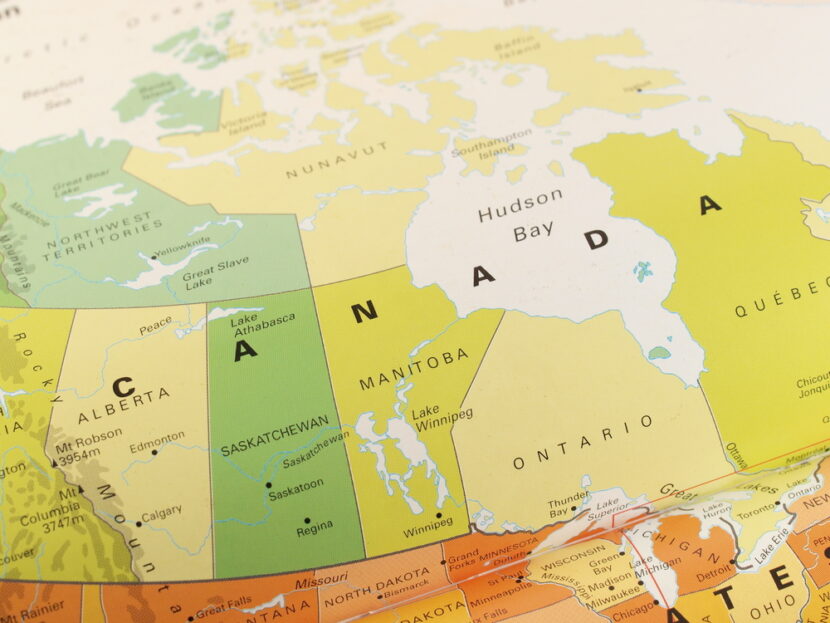MONTREAL – WestJet Encore is shaking up Canada’s regional airline market, pressuring rivals to cut fares and lower costs as it prepares to expand its presence in Eastern Canada and enter the United States.
Launched more than a year ago, the Calgary-based carrier claims to be “liberating Canadians from the high cost of air travel” and stimulating demand.
“I think we’ve woken the competition up absolutely,” said Encore president Ferio Pugliese.
Encore hopes to double its fleet of 14 Bombardier Q400 turboprops by 2016 and is already adding to its nearly 100 flights per day to 18 destinations, mainly in Western Canada.
A route was recently added between Thunder Bay and Toronto. Eastern service will be introduced in the coming months to Quebec City, Montreal, Ottawa, Fredericton and American destinations from both ends of Canada are set to be added by 2016.
At full maturity, Encore aims to increase its share of the Canadian regional market to more than 40 per cent, but declined to indicate its current share.
Air Canada (TSX:AC.B), as the country’s largest operator, and regional partner Jazz stand to feel the most heat.
Air Canada CEO Calin Rovinescu said he is not surprised by the impact of Encore on its routes and has deployed Q400s on some western routes ahead of time to increase flights and beat the competition.
He recently described Encore’s impact as “de minimis” but said (Air Canada’s) regional network must operate more competitively by lowering costs.
“With the roll out over the next several years, we certainly expect our regional partners to increase their competitiveness,” he told analysts during a conference call in August to discuss its second-quarter results.
Encore’s strategy is to target markets with populations of least 100,000 populations and drive at least half the passengers to WestJet’s mainline network as it expands overseas with widebody planes.
Pugliese said industry passenger traffic in markets like Nanaimo and Terrace, B.C., has increased 35 to 50 per cent since Encore launched service by driving a 30 to 40 per cent reduction in airfares.
Encore says traffic in Fort St. John, B.C., has quadrupled since it started service, while fares dropped 60 to 80 per cent. Fare reductions were 20 to 30 per cent in other new markets.”
“People otherwise not taking the plane are now using aircraft where otherwise they would have driven or not travelled.”
Airline analyst Robert Kokonis said Encore’s impact on Canadian aviation will intensify as it expands east.
“It’s going to be great for travellers because fares are going to go down but it will affect the bottom line of carriers like Porter,” said the president of airline consulting firm AirTrav.
Porter Airlines, which launched in 2006, is based at Toronto’s downtown airport, flies mainly in eastern Canada and the United States, but is also planning to expand its destinations west.
Kokonis said Air Canada is adjusting to the competition by leveraging its partnership with non-unionized Sky Regional, which shuttles passengers mainly between Porter’s hub at Toronto’s city airport and Montreal, to pressure Jazz to cut its costs.
Sky Regional, which started in 2011, later added Air Canada’s fleet of Embraer 175 jets to U.S. destinations.
Joseph Randell, CEO of Jazz parent company Chorus Aviation (TSX:CHR.B), acknowledges that the increased competition is putting more pressure on Jazz.
“As a large supplier in Canada we definitely feel the pressures to reduce our costs and we’re doing so and have plans to continue down that road,” he said in an interview.
The Halifax-based company expects to spend $25 million by year end on voluntary severance packages to reduce the number of senior and higher-paid pilots. It is also replacing smaller aircraft with Q400 turboprops. Over three years, 32 older 50-seat regional jets have been removed and replaced with 21 of its 74-seat turbos.
Randell said it can reduce costs even further by continuing to replace aircraft and changing the structure of the agreement that governs its relationship with Air Canada to reward lowering costs.
But he said the company isn’t seeking to roll back pilot wages, which are higher at Jazz than startup airlines.
Capt. Dan Adamus, president of the Air Line Pilots Association Canada which represents 1,500 Jazz pilots, said it is prepared to work with employers, but salaries need to be “fair and equitable and commensurate with the responsibilities a pilot has.”
Once part of Air Canada’s operations, Jazz was spun off as a separate company in 2006. It is the country’s dominant regional player, operating about 800 flights a day to more than 80 North American destinations with a fleet of 122 turbo and jet aircraft.
Canada’s regional airline sector is seen as more stable than the U.S., which faces intense pressure from ultra-low cost carriers like Spirit Airways and Allegiant.
The consolidation of six large U.S. airlines into three has also prompted an estimated 10 per cent reduction in regional flights as small airplanes were replaced with larger ones and large carriers rewrote contracts to cap the profit margins of their regional partners.
